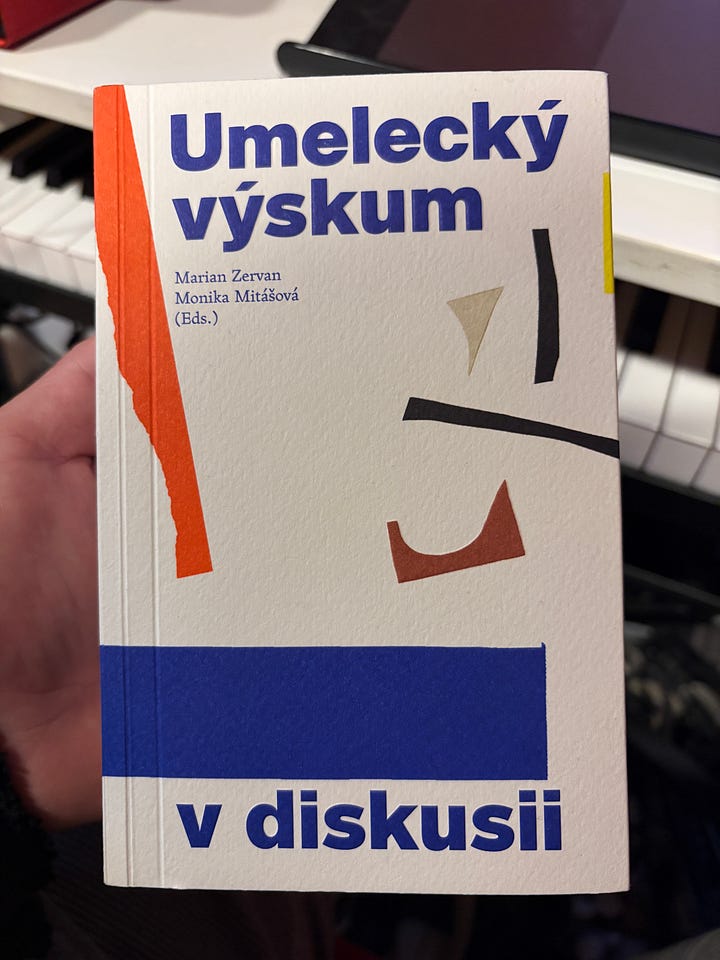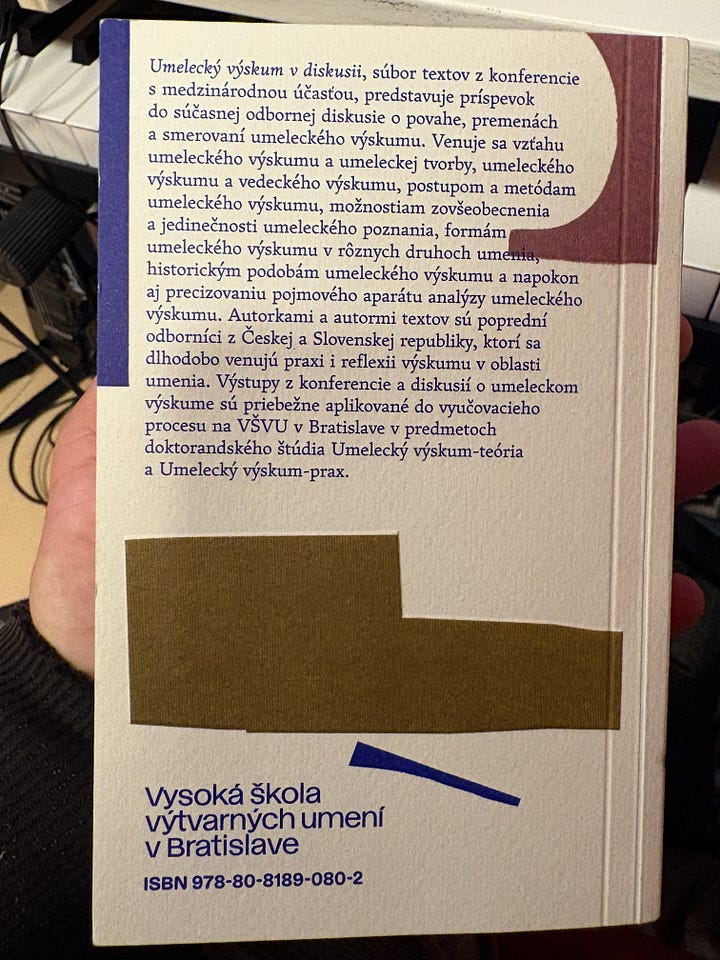The Future of Experimental and Electronic Music
From Jon Hassell to live sampling – where folklore, improvisation, and the digital world converge.
My Essay Published in an Academic Journal
In recent days, my essay “The Future of Experimental and Electronic Music” was published in the anthology Artistic Research in Discussion, released by the Academy of Fine Arts and Design in Bratislava.
In the essay, I reflect on how the creation, layering, and perception of sound are changing. On what can be considered “music” today. And on what emerges when improvisation, live sampling, sonority, and hybrid thinking come together in the creative process.
I also explore where experimental music might go once it frees itself from genre labels—while still holding on to its own identity.
The Future of Experimental and Electronic Music
David Kollar
Creativity and Unique Sounds
Creativity in experimental and electronic music lies in the creation of unique sounds that differ from traditional instrumental tones. These sounds may come from synthesizers, field recordings, or various experimental techniques, each bringing new textures and character to music. Musicians who craft and use these sounds can express their artistic visions and emotions with precision, setting themselves apart from conventional music-making.
Layering Sounds and Their Contexts
Layering sounds and combining them in different contexts opens up endless possibilities for music creation. This process allows for the formation of complex sound textures and harmonic relationships that would be impossible to achieve otherwise. Layering adds depth and intricacy, much like layering colors and textures in painting, where each layer contributes to the richness of the final piece. Experimenting with dynamics, spatial placement, and rhythmic structures leads to compositions that are technically refined and emotionally engaging.
Blending Melodies and Harmonies
In experimental and electronic music, the interplay of melodies and harmonies within contrasting sonic backdrops plays a crucial role. This approach enables musicians to create unique soundscapes where traditional elements meet novel and unexpected sounds. The blending of melodic and harmonic content in varied contexts adds new dimensions to music, expanding the creative space for expression.
Live Sampling: Real-Time Creativity
Live sampling—mirroring sounds directly on stage—represents a further evolution in experimental and electronic music. Musicians record each other and respond to altered or processed tracks that are generated during the performance. This approach demands high skill and improvisational ability, as artists must instantly react to new sonic stimuli. Live sampling creates a dynamic and interactive experience where each performance becomes a one-of-a-kind musical event.
Musical Contexts as Sonority
In experimental and electronic music, it is essential to perceive musical relationships as sonority—a complex blend of sounds that forms a rich and textured auditory experience. Sonority allows musicians to explore various sound qualities and their interrelationships, opening new avenues for creation. This approach fosters innovation and experimentation, which are key to developing a unique musical identity.
Fourth World Music: Globalization and New Contexts
Fourth World music—a concept introduced by pioneer Jon Hassell—represents a compelling fusion of traditional folkloric elements and modern technological processes. Described by Hassell as “imaginary landscapes” or “beautiful hybrid musical worlds,” this style emerged thanks to globalization and access to sounds from all over the globe. Through technology, regional and folk elements are placed in new contexts, resulting in distinctive sonic worlds.
Folk Elements and World Music
Folk elements and world music—often seen as representatives of specific regional traditions—gain new life through technological innovation. Electronic tools and production techniques allow these traditional sounds to be transformed and adapted to modern musical styles. This creates unique musical experiences that bridge the old and the new, the traditional and the contemporary. However, these folk elements often appear only as fragments, sonic colors, or samples.
Expanding Fourth World Music into Other Genres: Jazz and Contemporary Classical
Fourth World music, with its rich mix of traditional folklore and modern technologies, has the potential to enrich other genres such as jazz and contemporary classical music. Through creative integration of diverse sounds and techniques, new forms of expression and hybrid aesthetics can emerge.


This essay was published in the anthology
“Artistic Research in Discussion”
Academy of Fine Arts and Design in Bratislava, 2024
ISBN: 978-80-8189-080-2



